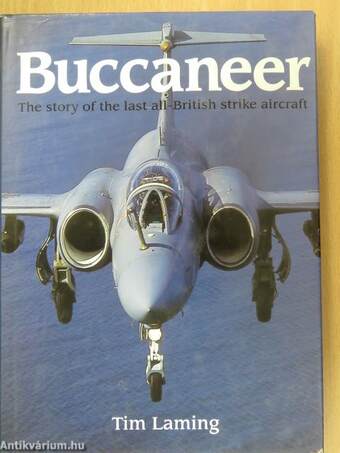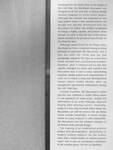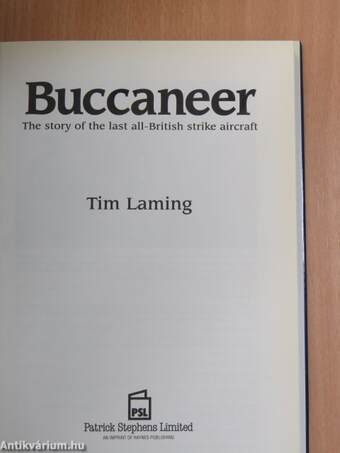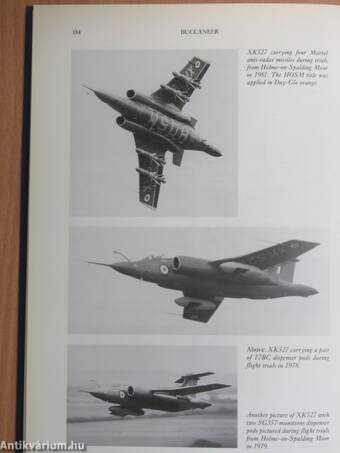1.062.898
kiadvánnyal nyújtjuk Magyarország legnagyobb antikvár könyv-kínálatát

VISSZA
A TETEJÉRE
JAVASLATOKÉszre-
vételek
Buccaneer
The story of the last all-British strike aircraft
| Kiadó: | Patrick Stephens Limited |
|---|---|
| Kiadás helye: | Sparkford |
| Kiadás éve: | |
| Kötés típusa: | Fűzött kemény papírkötés |
| Oldalszám: | 200 oldal |
| Sorozatcím: | |
| Kötetszám: | |
| Nyelv: | Angol |
| Méret: | 24 cm x 17 cm |
| ISBN: | 1-85260-478-6 |
| Megjegyzés: | Színes és fekete-fehér fotókkal, fekete-fehér illusztrációkkal. |
naponta értesítjük a beérkező friss
kiadványokról
naponta értesítjük a beérkező friss
kiadványokról
Fülszöveg
The Blackburn Buccaneer was developed speeifically for operation from the Royal Navy's aircraft carriers to deliver nuclear weapons to Soviet navy targets. The later S2 variant with Rolls-Royce Spey engines was highly regarded as a capable and potent strike aircraft and served with the Fleet Air Arm until a change in defence policy saw the demise of large aircraft carriers,
The Buccaneer then went on to a second career with the Royal Air Force where initial scepticism gave way to admiration for this outstanding low-level strike aircraft. It enjoyed a long career with the RAF, and just be főre retirement, was unexpectedly engaged on active service when a number were called upon to play a vitai role in the 1991 Gulf War. This is the Ml story of the development of this important all-British design, its naval and air force careers and its export success with the South African Air Force.
978185260478301999
Developed for the Royal Navy at the height of the Cold War, the Blackbum... Tovább
Fülszöveg
The Blackburn Buccaneer was developed speeifically for operation from the Royal Navy's aircraft carriers to deliver nuclear weapons to Soviet navy targets. The later S2 variant with Rolls-Royce Spey engines was highly regarded as a capable and potent strike aircraft and served with the Fleet Air Arm until a change in defence policy saw the demise of large aircraft carriers,
The Buccaneer then went on to a second career with the Royal Air Force where initial scepticism gave way to admiration for this outstanding low-level strike aircraft. It enjoyed a long career with the RAF, and just be főre retirement, was unexpectedly engaged on active service when a number were called upon to play a vitai role in the 1991 Gulf War. This is the Ml story of the development of this important all-British design, its naval and air force careers and its export success with the South African Air Force.
978185260478301999
Developed for the Royal Navy at the height of the Cold War, the Blackbum Buccaneer was designed to fly low and fast, to deliver deadly nuclear weapons to Soviet naval targets. Although the aircraft was regarded as less than perfect when it first entered service, the design was quickly developed into the Buccaneer S2 which was widely recognised as being a highly capable and potent strike aircraft. As such, it was the last carrier-borne attack aircraft to be produced specifically for the Fleet Air Arm.
Although much-loved by the Royal Navy, the Royal Air Force countered strong political pressure to purchase the Buccaneer, and it was not until the 1970s that the RAF grudgingly adopted the type as a low-level strike aircraft and conventional bomber. However, after it entered service the RAF rapidly changed its views and realised the Buccaneer was in fact a truly outstanding machine, ideally suited to its requirements. It went on to enjoy a long and distinguished career which ended shortly after an unexpected operational deployment during the 1991 GulfWar.
A victim of politics, the Buccaneer's export success was confined to South Africa where it was operated for many years, despite the difficulties of an arms embargó imposed shortly after entering service. Ironically, today it is now only in South Africa where the Buccaneer can still be seen in the air, flying under civilian ownership. A classic design which in many respects is still unbeatable, the Buccaneer was the ultimate example of all-British strike aircraft design.
Tim Laming is an established aviation author and photographer, specialising in modern military subjects. He has written more than a dozen books on various aviation topics and is alsó an occasional contributor to the aviation press. He lives in Sheffield. Vissza
Témakörök
- Idegennyelv > Idegennyelvű könyvek > Angol > Műszaki
- Idegennyelv > Idegennyelvű könyvek > Angol > Történelem > Európa története > Egyéb
- Történelem > Idegennyelvű > Angol
- Történelem > Kontinensek szerint > Európa, európai országok története > Nyugat-Európa > Anglia
- Történelem > Hadtörténet > Fegyverek, fegyvernemek
- Műszaki > Idegennyelv > Angol
- Műszaki > Hadászat, hadtörténet
- Műszaki > Közlekedés > Repülés > Repülők
- Műszaki > Közlekedés > Repülés > Repüléstörténet
- Műszaki
Tim Laming
Tim Laming műveinek az Antikvarium.hu-n kapható vagy előjegyezhető listáját itt tekintheti meg: Tim Laming könyvek, művekMegvásárolható példányok
Nincs megvásárolható példány
A könyv összes megrendelhető példánya elfogyott. Ha kívánja, előjegyezheti a könyvet, és amint a könyv egy újabb példánya elérhető lesz, értesítjük.










